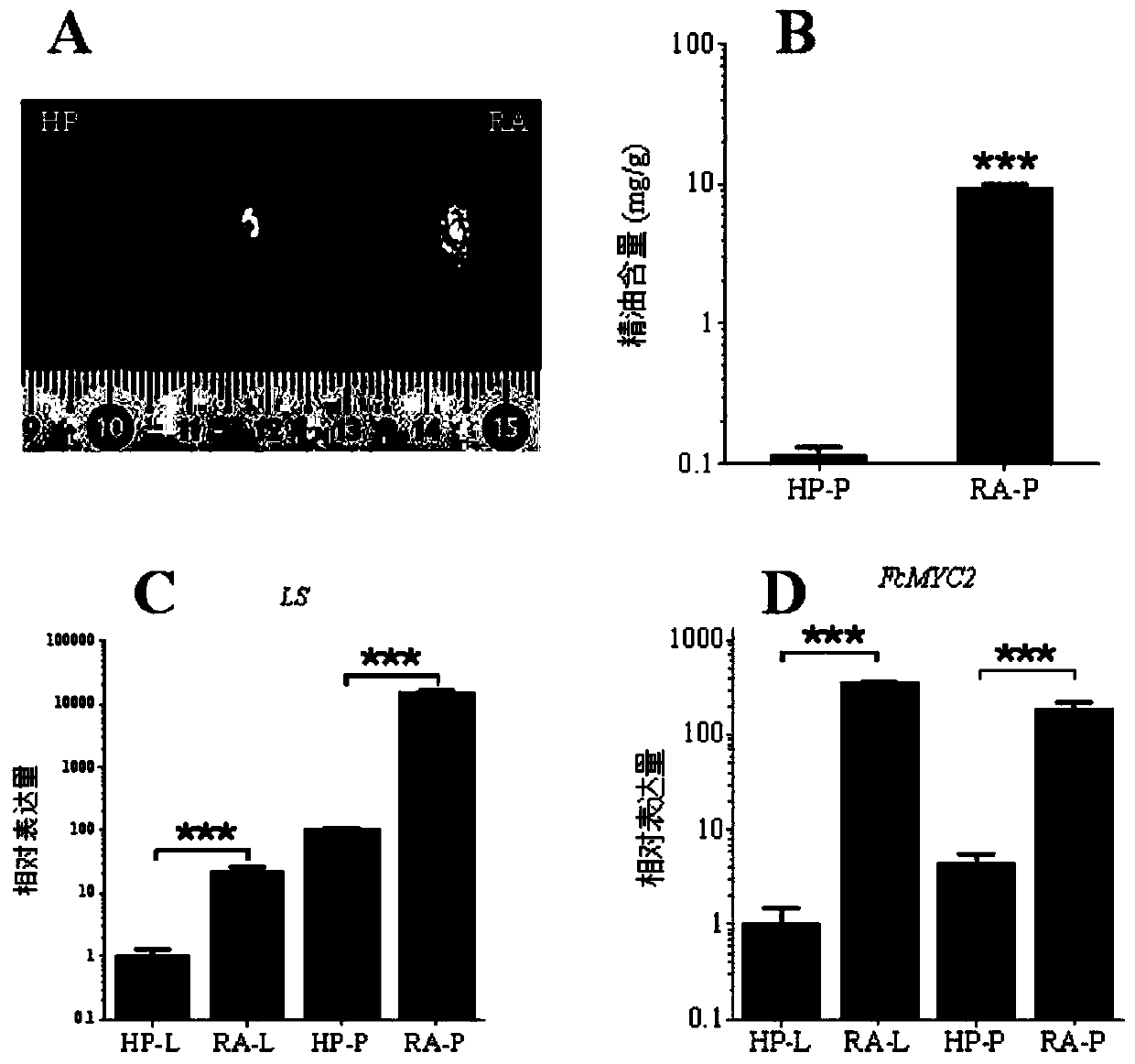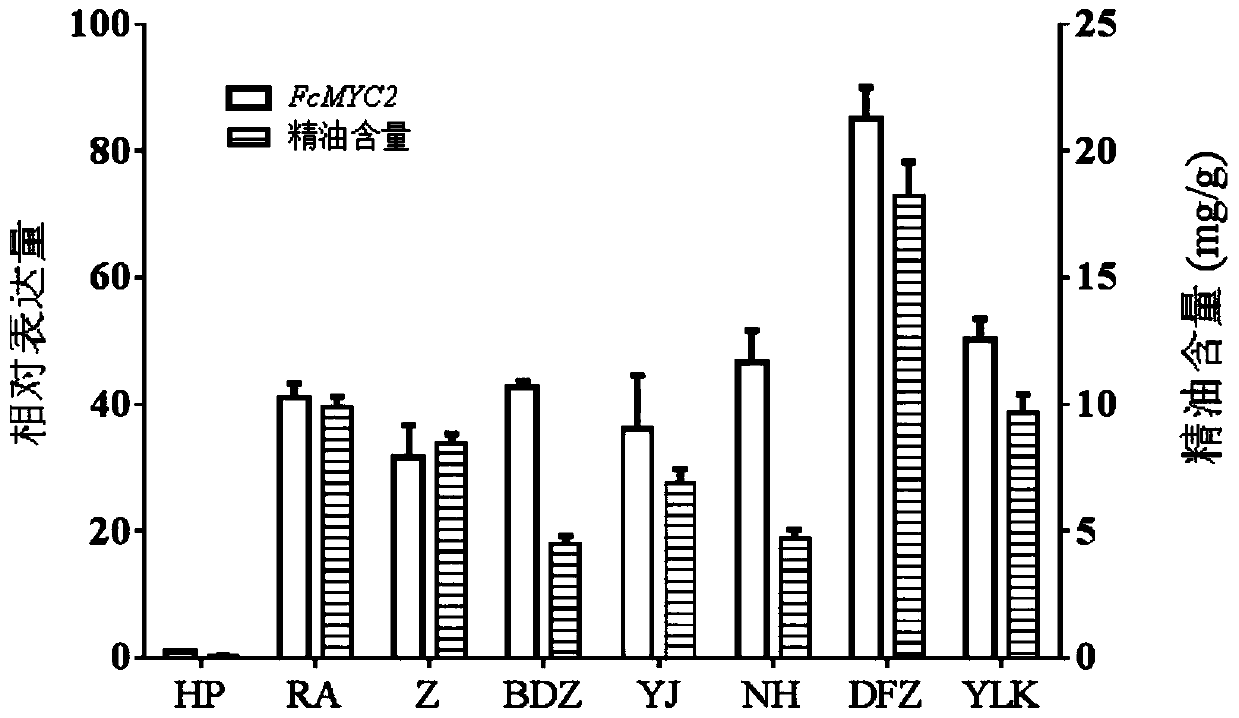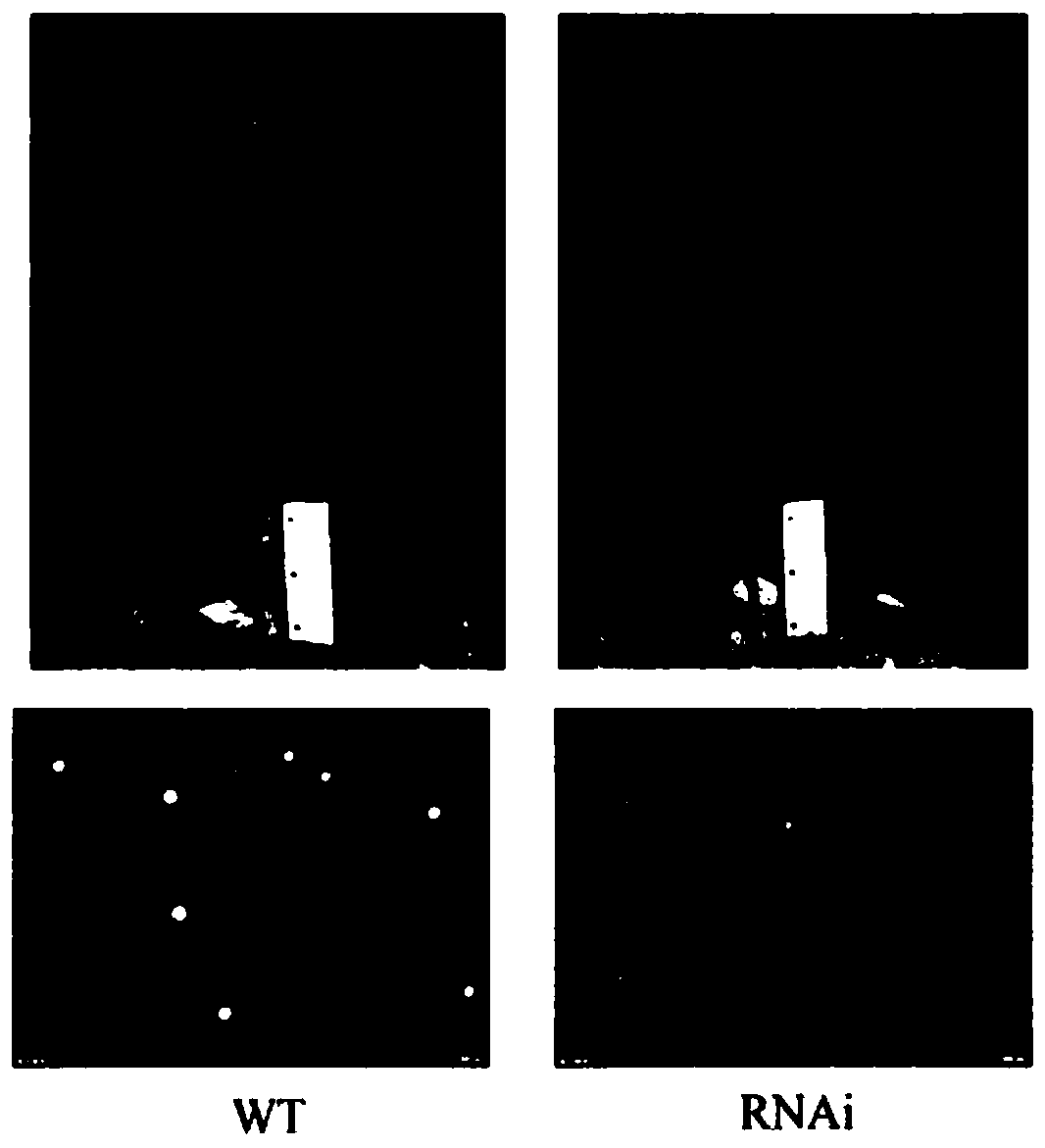Application of citrus FcMYC2 gene and encoded protein thereof in regulation and control of citrus essential oil synthesis
A citrus essential oil, gene technology, applied in the application, genetic engineering, plant genetic improvement and other directions, can solve the problem of low valencene content, and achieve the effect of high sequence specificity
- Summary
- Abstract
- Description
- Claims
- Application Information
AI Technical Summary
Problems solved by technology
Method used
Image
Examples
Embodiment 1
[0036] Titration of essential oil content in peel
[0037] In order to compare the difference of essential oil content in the pericarp of Huapi kumquat (HP) and Rongan kumquat (RA), the titration analysis of the essential oil content in the pericarp of the two varieties at the veraison stage was carried out by potassium bromide-potassium bromate titration. The result is as figure 1 As shown in middle B, the essential oil content of HP peel is 0.11 mg / g, and that of RA peel is 9.3 mg / g. The essential oil content of HP was extremely significantly lower than that of oleaginous normal variety RA (p<0.001), and also much lower than that of many other kumquat and citrus varieties.
Embodiment 2
[0039] Expression Analysis of FcMYC2 Gene and Limonene Synthase (LS) Gene in HP and RA Tissues
[0040] The FcMYC2 gene involved in this example is derived from kumquat (Fortunella crassifolia Swing.), and was screened from RNA-seq data of leaves and peels of HP and RA.
[0041] The limonene synthase gene involved in this example is derived from citrus, and limonene is the component with the highest content in the essential oil of citrus peel, which can reach more than 70% of the essential oil components.
[0042] The primer sequences used to detect the expression level of FcMYC2 gene are:
[0043] FcMYC2-qRT-F: 5'-TCCGCTCTGTGGTTCCAAAC-3' (SEQ ID NO.6)
[0044] FcMYC2-qRT-R: 5'-CTTGGCCCTGAGCTCTTTGA-3' (SEQ ID NO.7)
[0045] The primer sequences used to detect the LS gene are:
[0046] LS-qRT-F: 5'-ATGGAGATGGGCATGGTGTT-3' (SEQ ID NO.8)
[0047] LS-qRT-R: 5'-TGCCAGGAGATGCTGTGAAA-3' (SEQ ID NO.9)
[0048] Taking Actin (Cs1g05000) as an internal reference gene, its primer seq...
Embodiment 3
[0054] Correlation between the expression level of FcMYC2 gene and the essential oil content of citrus peel
[0055] Respectively in the present embodiment to Kumquat species HP, RA, Citrus species Citrus aurantium (Poncirus trifoliata (L.) Raf), Citrus species local early orange (Citrus reticulata Blanco), Yuanjiang sour orange (C.aurantium L.) , Newhall navel orange (C.sinensis(L.)Osbeck), Dongfengzaoyou (C.grandis(L.)Osbeck) and Eureka lemon (C.limon(L.)Burm) relative expression levels of FcMYC2 gene The essential oil content of the peel was analyzed. Among them, Dongfeng Zaoyou uses a blade to peel off the exocarp, and the other varieties peel off the whole peel. The result is as figure 2 As shown, the essential oil content in the peel of HP is only 0.09mg / g, and the essential oil content in the peel of several other citrus varieties is between 4.49 and 18.23mg / g, which is much higher than that in HP. Correlation analysis showed that the expression level of citrus FcMY...
PUM
 Login to View More
Login to View More Abstract
Description
Claims
Application Information
 Login to View More
Login to View More - R&D
- Intellectual Property
- Life Sciences
- Materials
- Tech Scout
- Unparalleled Data Quality
- Higher Quality Content
- 60% Fewer Hallucinations
Browse by: Latest US Patents, China's latest patents, Technical Efficacy Thesaurus, Application Domain, Technology Topic, Popular Technical Reports.
© 2025 PatSnap. All rights reserved.Legal|Privacy policy|Modern Slavery Act Transparency Statement|Sitemap|About US| Contact US: help@patsnap.com



